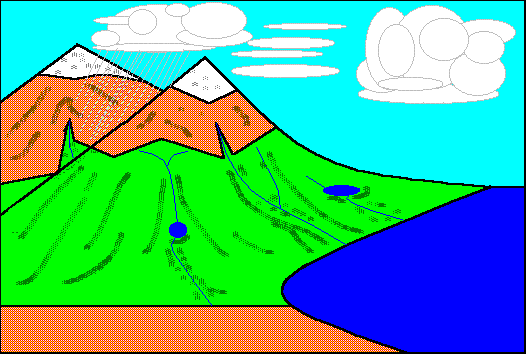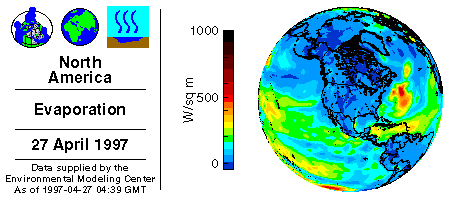
Water is transferred from the surface to the atmosphere through evaporation, the process by which water changes from a liquid to a gas.
Approximately 80% of all evaporation is from the oceans, with the remaining 20% coming from inland water and vegetation. Winds transport the evaporated water around the globe, influencing the humidity of the air throughout the world. For example, a typical hot and humid summer day in the Midwestern United States is caused by winds blowing tropical oceanic air northward from the Gulf of Mexico.
Approximately 80% of all evaporation is from the oceans, with the remaining 20% coming from inland water and vegetation. Winds transport the evaporated water around the globe, influencing the humidity of the air throughout the world. For example, a typical hot and humid summer day in the Midwestern United States is caused by winds blowing tropical oceanic air northward from the Gulf of Mexico.

Most evaporated water exists as a gas outside of clouds and evaporation is more intense in the presence of warmer temperatures. This is shown in the image above, where the strongest evaporation was occurring over the oceans and near the equator (indicated by shades of red and yellow).